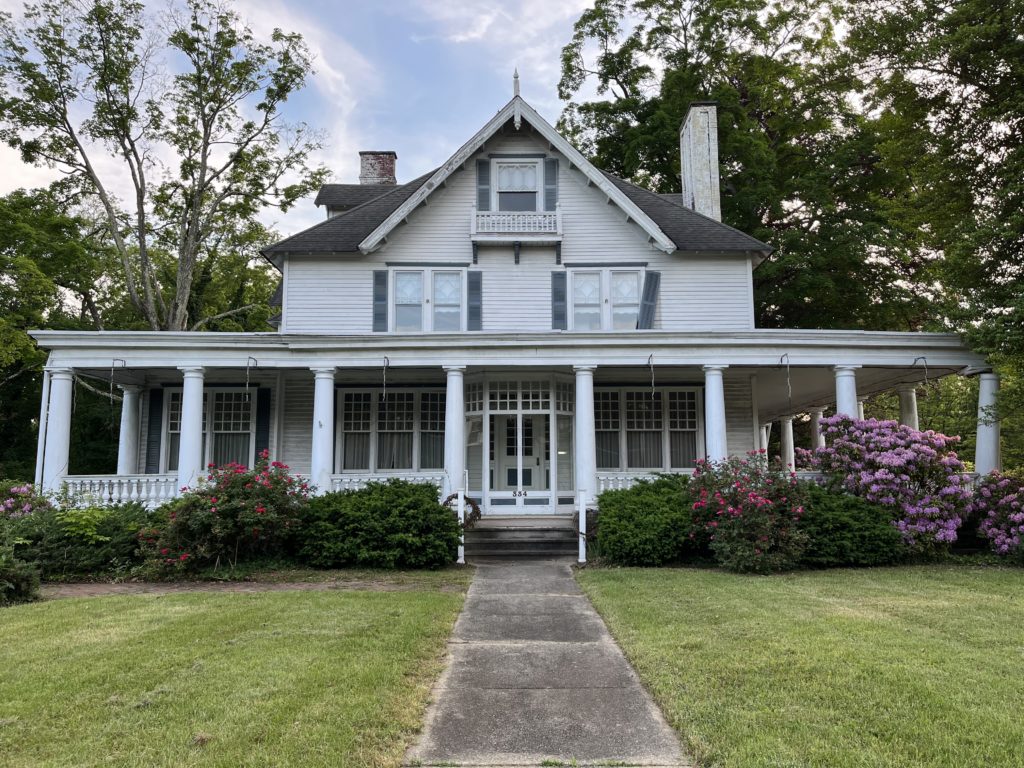
The founding of Saving Historic Moorestown was inspired by the urgent need to rescue the former Chester Avenue home of John and Minnie Perkins from demolition and subdivision. The nonprofit hosted a capital campaign kickoff on May 22.
“We aim to provide financial investment for the preservation and enhancement of Moorestown’s unique history and historic assets for its current and future generations as a link to its past and vision for its future,” said Julie Maravich, president of Saving Historic Moorestown, at the event.
The property at 334 Chester Ave. is among homes in danger of being torn down or falling due to neglect. John was a cousin of Dudley Perkins, former resident of what is now known as the Perkins Center for the Arts. John’s home was designed by the Wilson Brothers Company, which also designed the Reading Terminal, the Franklin Institute and even the Basilica of Saints Peter and Paul in Philadelphia.
“Of course, we have all watched the sad decline of that glorious home over the last decade,” Maravich noted of Perkins’ former home. “What motivated me was a fortuitous phone call to the historical society (of Moorestown) in early spring of 2022.”
Maravich explained that the current owner of the house called to let the historical society know he had recently bought it, and that it was full of historical items he and others were willing to donate. He then mentioned the idea to tear the house down and build three or four others.
“I thanked him profusely and agreed to meet him there in five or 10 minutes,” Maravich recalled. “Several of us – including Steph Herz, Gary Ell, Lenny Wagner, Dave Schill, Kimberly Bunn and Susan Reel-Panish – have been combing through the crazy amount of stuff left behind. Clothing and photos and jewelry and magazines and postcards and canceled checks … and an unbelievable Civil War commendation that we have on display along with other treasures we found.”
Saving Historic Moorestown held its first organizational meeting to save 334 Chester Ave. on Feb. 6. The group had 13 meetings in 13 weeks and came up with a plan as they grew to 25 diverse and inspirational residents. Initially, members thought to buy the home themselves and turn it into a bed and breakfast, but they pivoted when the offer was rejected.
With the help of Dorothy Guzzo, recently retired director of the New Jersey Historic Trust, Saving Historic Moorestown came to fruition. It’s an organization of concerned citizens who came together to save an important landmark that was threatened with demolition and who came to understand the need to actively engage and invest in preservation throughout Moorestown, according to the nonprofit’s website.
Saving Historic Moorestown expects to accomplish its mission through community advocacy, financial incentives, guidance and stewardship.
“We will offer a financial tool, a perpetual historical easement with an approximate value of between 8 and 10% of the purchase price of an endangered and historically significant home to a preservation minded buyer,” Maravich pointed out.
“We believe that this financial boost will be just the incentive needed to motivate a potential buyer,” she continued. “The recipient of our grant will sign a perpetual historical easement that will protect the significant historical features of the exterior without our guidance. They would also agree never to demolish the home or subdivide the lot.”
Looking ahead, Saving Historic Moorestown also intends to save the Cowperthwaite house, located at the entrance to Moorestown on the corner of King’s Highway and Lenola Road. Built in 1742, it stood when Hessian mercenaries stormed down Main Street and ransacked Smith-Cadbury Mansion.
“We only have six remaining witness houses (the Cowperthwaite house was a witness to the American Revolution) in the historical district,” Maravich said, “and currently none have any protection from demolition.”
For more information on Saving Historic Moorestown, visit www.savinghistoricmoorestown.org.


